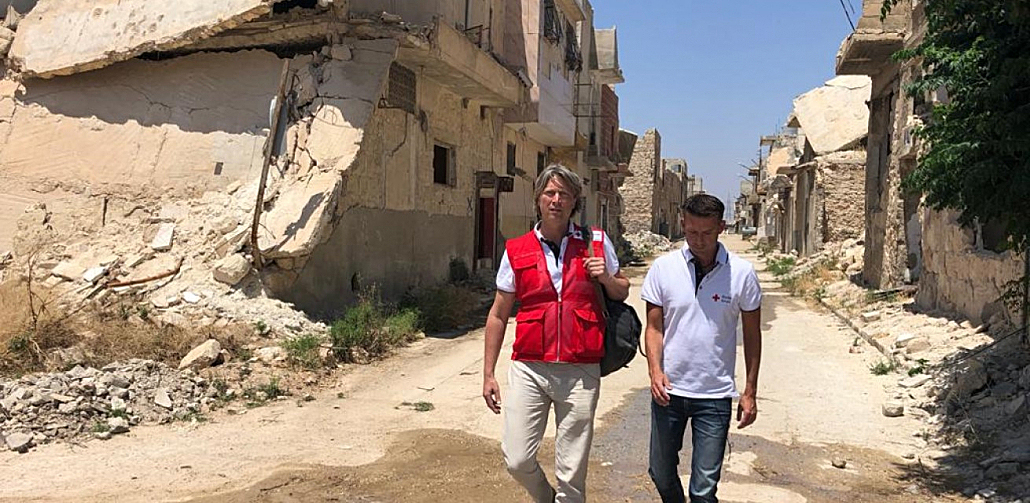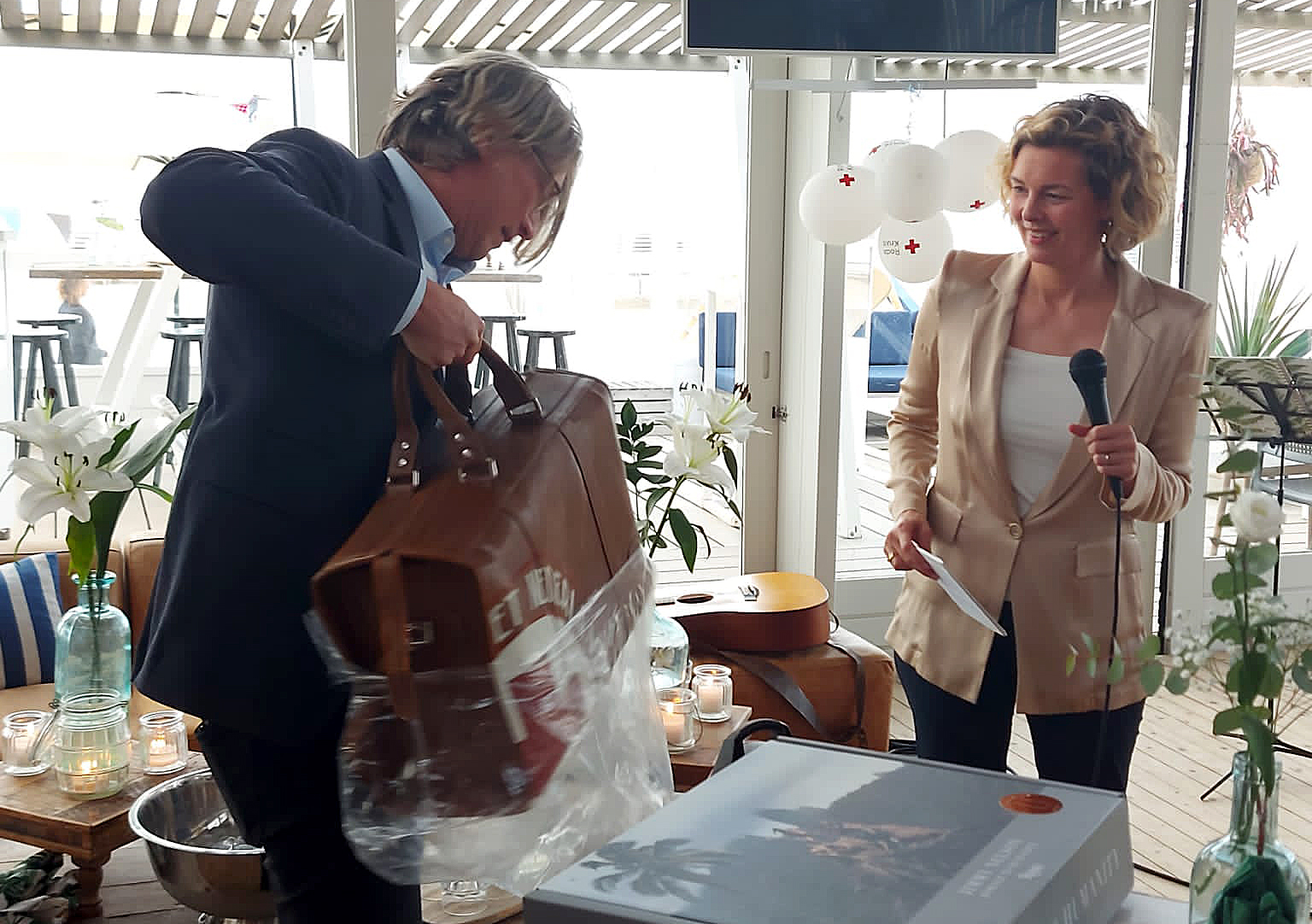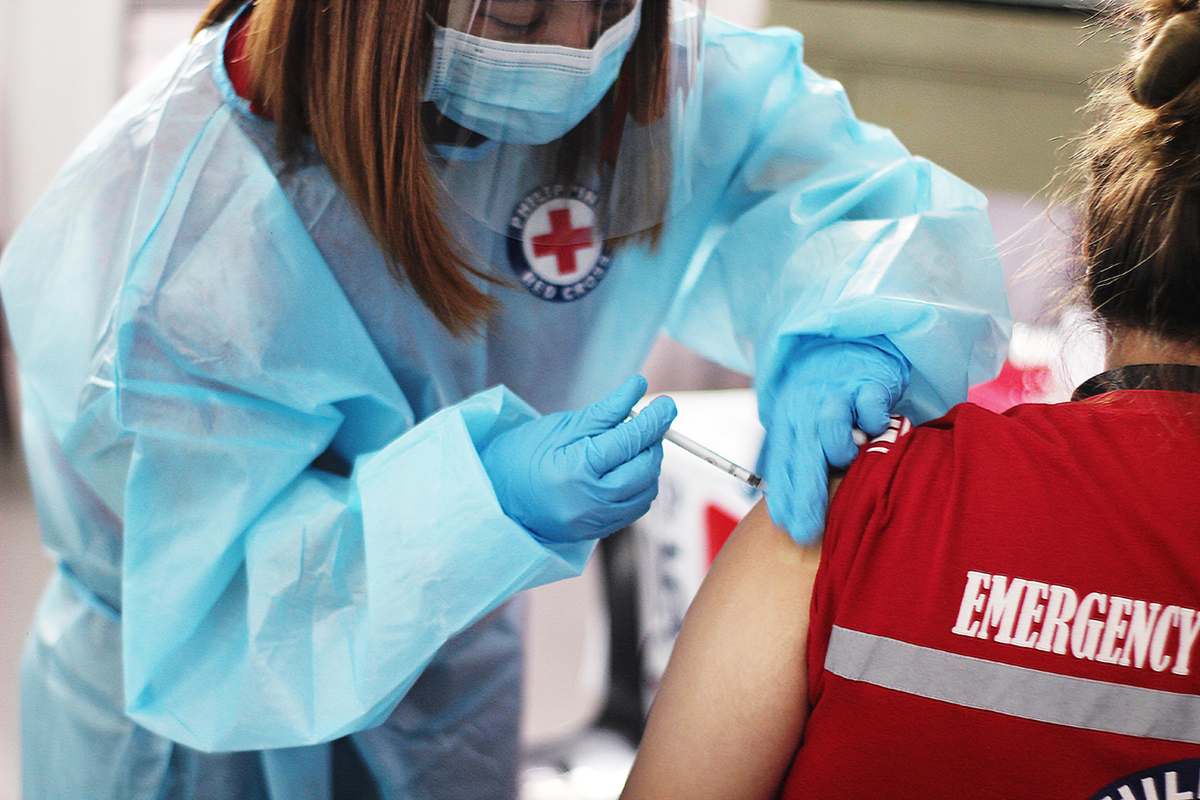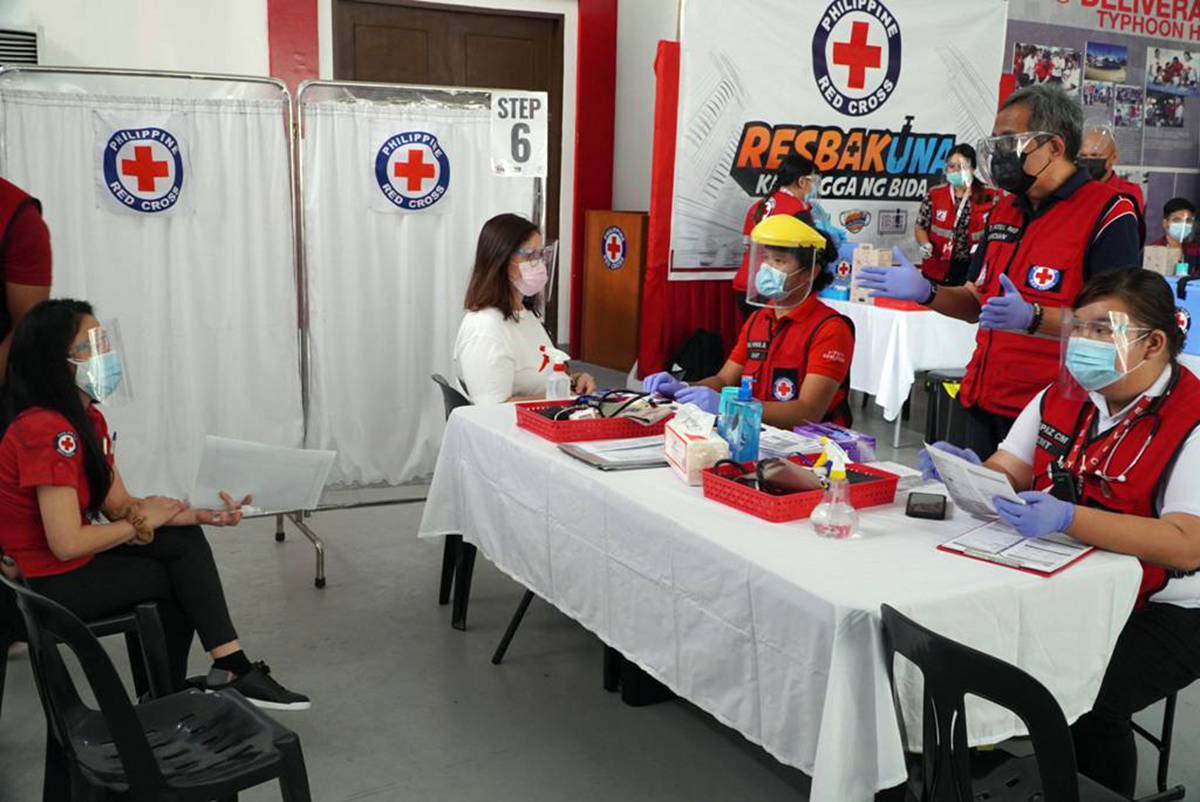Job of the future
Juriaan Lahr is leaving after 16 years, to join the International Federation in Geneva
Read articleRumour Tracking Tool in the Philippines
Innovative approach to vaccination campaigns
Read articleReading time 10 minutes
JOB OF THE FUTURE
Juriaan Lahr is leaving after 16 years, to join the International Federation in Geneva
Juriaan Lahr has recently started work as Director of Digital Transformation with the International Federation of the Red Cross in Geneva. He looks back at his years of work as Director of International Aid in The Hague. And looks forward to the position in which he will have to navigate between rapid digital developments and the bureaucracy at the International Federation.

“A lot has changed over the last 16 years within the Dutch Red Cross,” says Juriaan Lahr, until recently Director of International Aid. In a positive way, he stresses. On 1 September Juriaan made the move to the International Federation of the Red Cross (IFRC) in Geneva, where he works as Director of Digital Transformation. “A job of the future,”he says. “Last year I took part in writing the new digital strategy, now comes the implementation.” At the head of the troops, Juriaan will promote the use of digital techniques so that the worldwide provision of aid by the Red Cross is improved, accelerated, made more sustainable and remains relevant. “Effectively, it's a constant ‘start up’.”
Mission impossible
As a young tax specialist, Juriaan joined the Red Cross family in 1997. After an old Russian from the IFRC in Geneva despaired of the financial housekeeping in Georgia, Juriaan was sent there to sort the situation out. “A mission impossible, but in the end I managed to reconcile all the reports. ” He had proved what he was capable of, and the following year he went to Afghanistan for a new mission.
It wasn't just curiousity about the international workfield that attracted Juriaan to travel abroad. He had inherited the idealism of 'caring for each other’ as a child; his father was a GP and his mother was an anthropologist. “It is important that we carry on caring for each other in extreme adversity. You could be the one that needs help tomorrow.” The Red Cross makes a difference to people's personal circumstances worldwide, even if the appalling situation in a country doesn't always change. “For example, in Afghanistan and Syria; helpers from the Red Cross are supporting their own communities with, among other things, food, water and medical care. But more importantly: they offer hope that a solution will come.”

In the same boat
“Partnerships don't always run smoothly, but I think you can always find common ground in the shared responsibilities that you have. At the end of the day, you are in the same boat and you have to keep on seeing the possibilities.” In September 2005, when he came to work at the head office in the Hague at the age of 35, the international division was small, the pressure of work was high, and the internal procedures were not running smoothly. “That was not particularly efficient. I was given the space to bring in new people, to improve the collaboration and to develop a new strategy. By involving both the personnel in the field and at the head office more closely in the procedures, and obtaining their commitment and support, the atmosphere improved and we were able to work on improving the provision of aid.”
Juriaan's persistence eventually resulted in getting data team 510 off the ground within the Dutch Red Cross. “In 2015 my colleague Maarten van der Veen came to me with his ambitions in the area of information management and the use of data and digital techniques for the provision of aid. I said: ‘refine your idea and turn it into a plan, then go and do it’. When there was flooding a year later in India and Bangladesh we were able to show how relevant it was to quickly map out the damage digitally. 510 has now expanded to form a large club. Nowadays, digital techniques form part of the aid effort and are extremely useful in the case of a pandemic or people who are hard to reach and highly vulnerable.”
“The Dutch Red Cross has grown enormously in professionalism”
Leap into the unknown
It is a bit of a leap into the unknown. But he is working steadily forward on the road he has chosen, of innovation and improving the provision of humanitarian aid. “Listen, of course there have been projects that didn't totally succeed, but as a whole the Dutch Red Cross has grown enormously in professionalism over the years.,” Juriaan explains. Within the international division there is a better understanding with the international Red Cross network, and the Climate centre was set up. “The refugee crisis in 2015 was a fascinating time. Then we focused on mobilising people and establishing a new formula in the form of "Welcome centres". That innovation and collaboration are marvellous to see. I can see very clearly that there are stronger ties between the various divisions of the Dutch Red Cross than beforehand.”
The dynamic between rapid digital developments and the bureaucracy of the IFRC is going to be a challenge, Juriaan believes. But he is confident in the change process and knows the organisation inside and out. “In the end it's a combination of giving and receiving trust. That calls for clarity and openness; everything must be up for discussion. There is always a way to come to a particular solution.” Above all, Juriaan wants to contribute to the effective provision of aid in the field, wherever that may be. “I have great admiration for the way in which our personnel and volunteers deal with disasters and conflicts worldwide, and how they offer help to other people in such difficult situations. Our local people enjoy the respect of the community; without them nothing at all is possible."
INNOVATIVE APPROACH TO VACCINATION CAMPAIGNS
Rumour Tracking Tool in the Philippines
In the Philippines rumours and fake news, spread via social media, result in lower acceptance of vaccination. The Rumour Tracking Tool, developed by the Dutch digital data team 510, is a useful tool. It enables communication campaigns to be implemented in a targeted and effective manner.

The Philippines have a history of negative reactions to vaccination programmes. So it was not surprising that there was resistance against corona vaccinations in recent months. The result is that fewer people have had themselves vaccinated. It is not the first time that fear has led to lower vaccination numbers. This can have major consequences, as was the case in 2018. Then the Philippines were struck by an oubreak of measles, with more than 18,000 reported cases.

Scan of Twitter
Paul Drossou, representative of the Red Cross in the Philippines: "Due to the fear surrounding vaccinations, polio returned as well, after having been eradicated long before. Initially, the Philippine Red Cross wanted to use a different mechanism for assembling data about vaccination campaigns. But then the Dutch Red Cross suggested using the Rumour Tracking Tool.”
The Rumour Tracking Tool scans messages on Twitter (tweets) for information about vaccines, using key words, and then allocates them to a variety of subjects. The results are displayed in real-time on a dashboard which shows, among other things, the frequency of the tweets, the dates on which they are posted and the location. This tool was developed by the digital data team 510 of the Dutch Red Cross.
“Responding efficiently to the needs of communities”
Good picture of rumours
Heleen Elenbaas is involved in the initiative for the digital data team 510, as manager. “Rumours and fake news clearly affect the vaccination level. People become scared or skeptical due to stories on social media, and then refuse to get themselves vaccinated. The Philippine Red Cross is one of the most important organisations offering these vaccinations in the nation. So it is essential to obtain a good picture of the rumours that are circulating. We have to tackle them. The ideal situation is if it becomes clear which rumours are spreading when and where, so that the communication campaigns can be implemented in the most targeted and effective way possible.”

Involvement of society
“In 2018 the Philippine Red Cross wanted to know what Philippine society thought about vaccination for measles," says Heleen about the previous use of this tool. "So that they could then respond to the persistent rumours in the community with specific programmes. People's sense of involvement and responsibility was appealed to, and this worked well. With the roll-out of the COVID 19 vaccines in recent months we decided to use this tool in a different form. This way, we integrate data concerning the corona vaccine.”
When asked if there are ways in which the Rumour Tracking Tool could be improved, she answers: "At present it focuses on Twitter data, because that is a public platform. However, the users of Twitter in the Philippines do not form a representative reflection of the population. So the findings don't apply throughout the whole nation.”
Next steps
In spite of this, Ellenbaas sees possibilities for a wider use of the tool. "Other Red Cross and Red Crescent associations are interested as well, above all with the continued roll-out of the COVID 19 vaccinations. The Rumour Tracking Tool has potential for expansion. The sharing of data and digital tools helps us to strive together to achieve a goal, and to respond efficiently to the needs of communities. This tool is a good example of how you can use innovative solutions to achieve concrete, targeted action.”